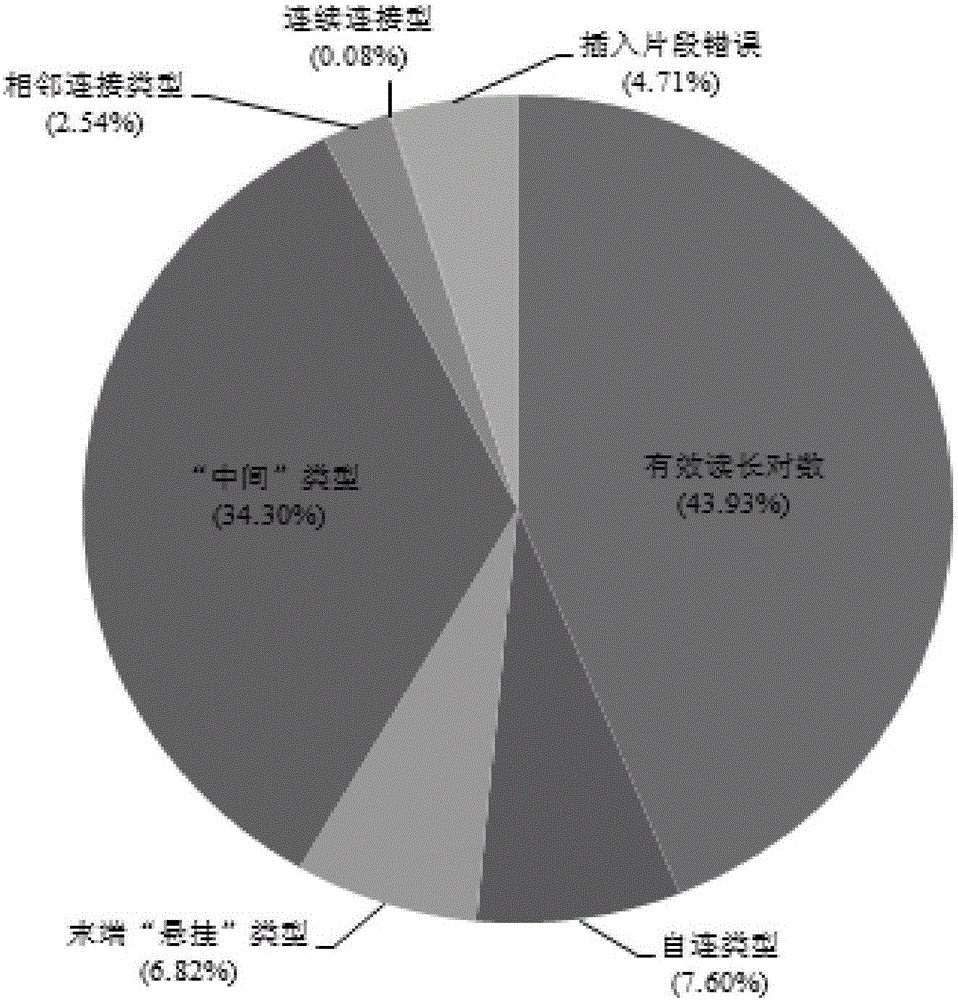Hi-C high-throughput sequencing and database building method for eukaryote DNA
A eukaryotic, high-throughput technology, applied in the field of biochemistry, can solve problems such as limited applications, and achieve the effects of wide applicability, improved cyclization efficiency, and simple operation procedures
- Summary
- Abstract
- Description
- Claims
- Application Information
AI Technical Summary
Problems solved by technology
Method used
Image
Examples
Embodiment 1
[0044] Example 1 The high-throughput sequencing library construction method suitable for rice Hi-C of the present invention
[0045] 1. Collect 1g of fresh leaves (to ensure the integrity of chromosome interaction), and put them on ice.
[0046] 2. Place the collected fresh tissue on a 50ml centrifuge tube, add 15ml of pre-cooled 4°C NIB buffer (add 15μl of mercaptoethanol before use) and 1ml of 36% formaldehyde solution, and incubate at 25°C for 40min. Just make sure the sample sinks to the bottom of the tube to ensure sufficient cross-linking. Add 2M glycine to make the final concentration 0.1M, and react under vacuum condition for 5min, all the samples are washed several times with ultrapure water, and the samples are ground into powder with liquid nitrogen.
[0047] Transfer 3.1 g of tissue samples to 10 ml of pre-cooled 4°C NIB buffer (in which the concentration of protease inhibitors is 0.1 mM), shake slowly on ice for 15 minutes, and filter the suspension twice with a ...
Embodiment 2
[0070] Example 2 The present invention is suitable for human blood Hi-C high-throughput sequencing library construction method and its comparison with the library construction method not of the present invention
[0071] 1. Experimental steps and results of the Hi-C library construction method not of the present invention:
[0072] 1. Collect white blood cells in 1ml of fresh blood (to ensure the integrity of chromosome interaction), and place on ice.
[0073]2. Place the collected white blood cells in a 15ml centrifuge tube and resuspend with 12ml of freshly prepared PBS. Add 686 μl of 37% formaldehyde (final concentration 2%), and mix by inverting at room temperature for 10 min. Add 1.8ml of 1M glycine (final concentration 0.125M), and mix for 2-3min. Centrifuge at 3000rpm for 20min to collect white blood cells; resuspend the pellet once in pre-cooled 4°C PBS, and centrifuge to remove the supernatant. Resuspend leukocytes in 5ml of pre-cooled 4°C lysis buffer (with protea...
PUM
 Login to View More
Login to View More Abstract
Description
Claims
Application Information
 Login to View More
Login to View More - R&D
- Intellectual Property
- Life Sciences
- Materials
- Tech Scout
- Unparalleled Data Quality
- Higher Quality Content
- 60% Fewer Hallucinations
Browse by: Latest US Patents, China's latest patents, Technical Efficacy Thesaurus, Application Domain, Technology Topic, Popular Technical Reports.
© 2025 PatSnap. All rights reserved.Legal|Privacy policy|Modern Slavery Act Transparency Statement|Sitemap|About US| Contact US: help@patsnap.com



